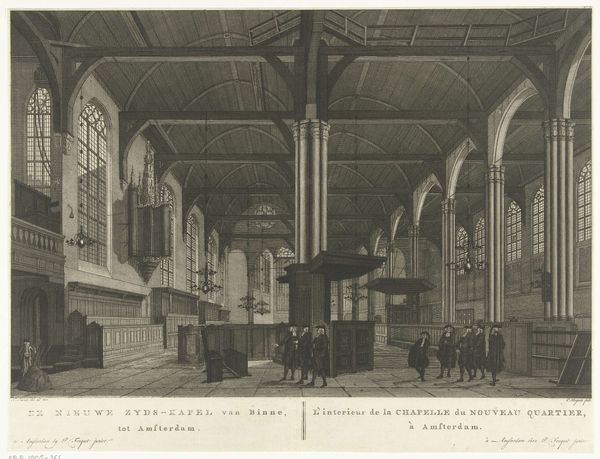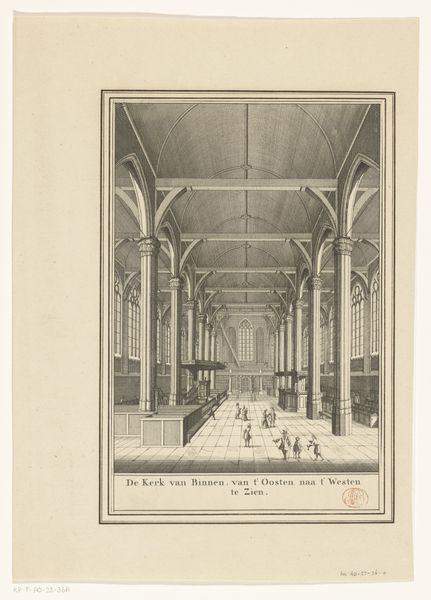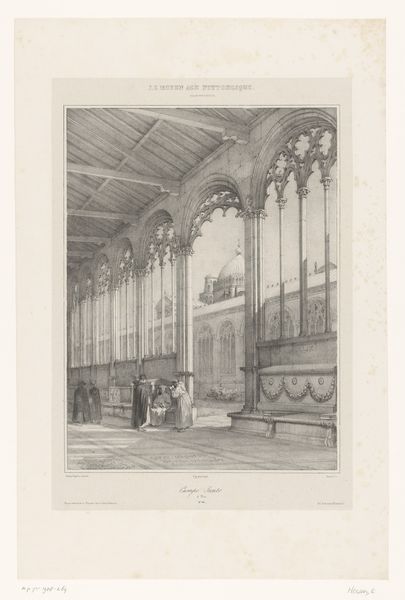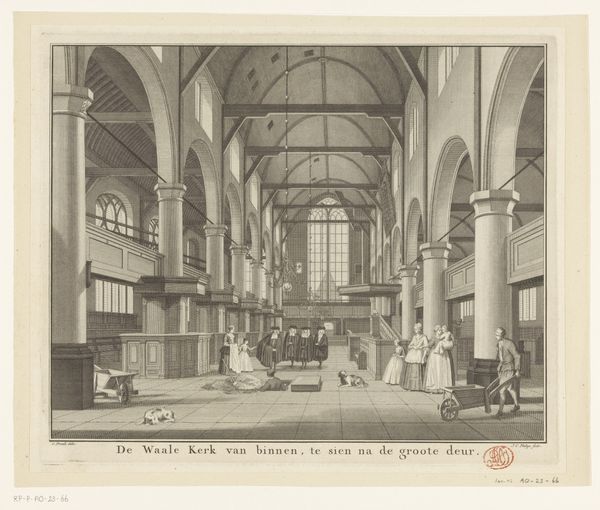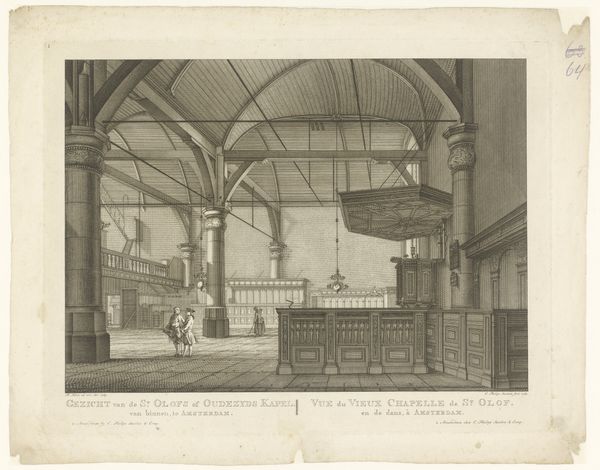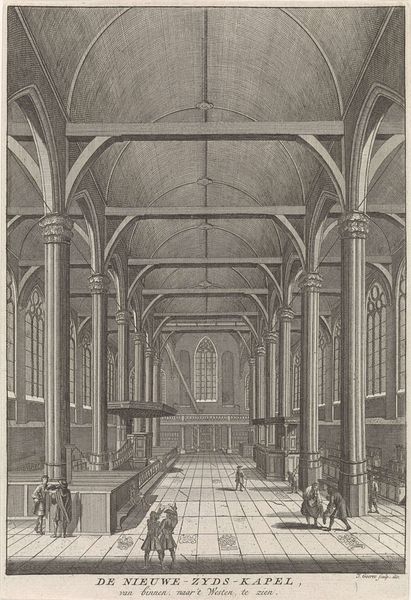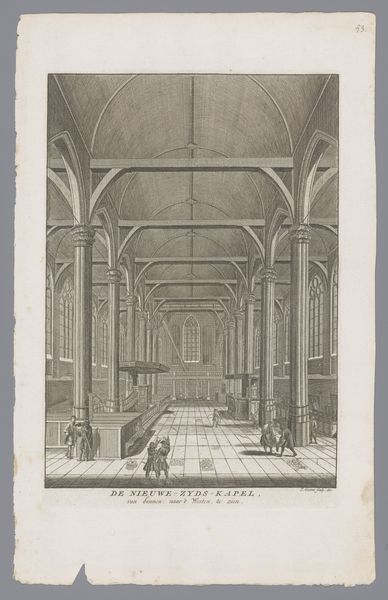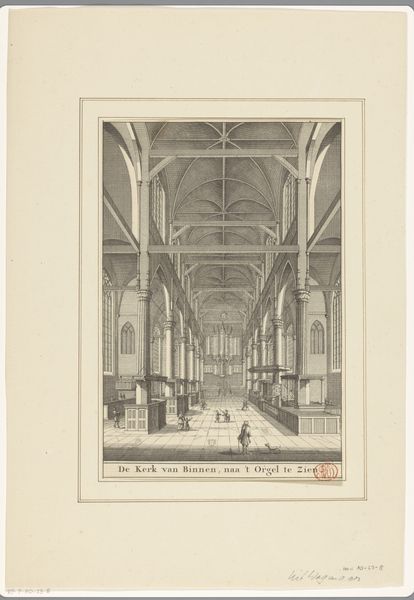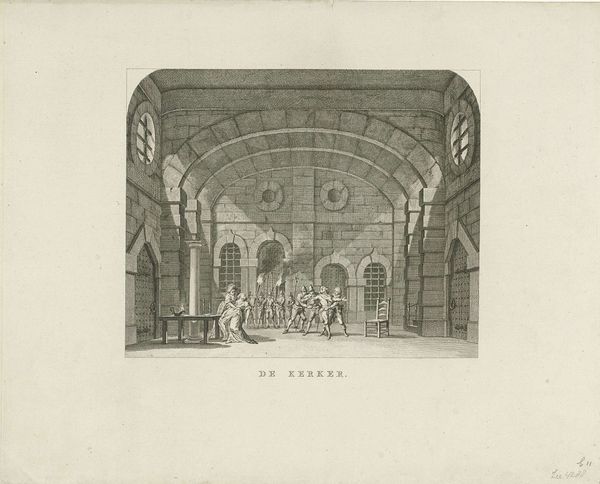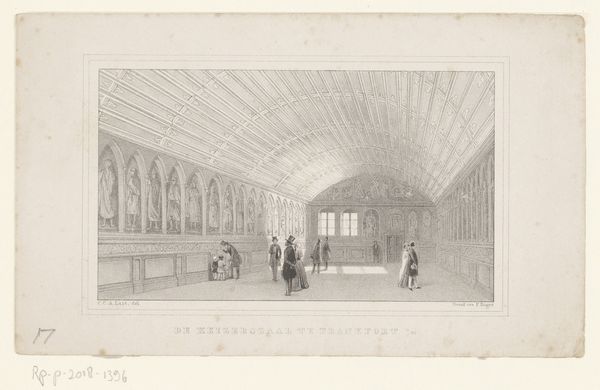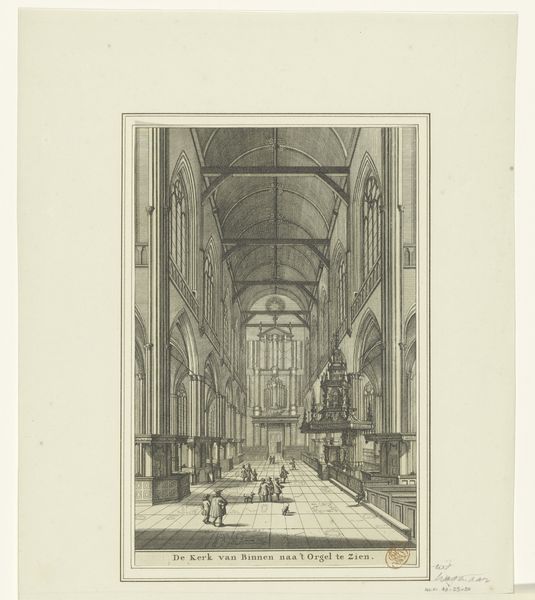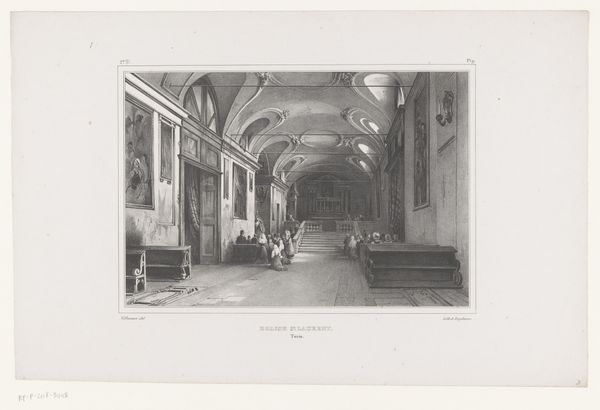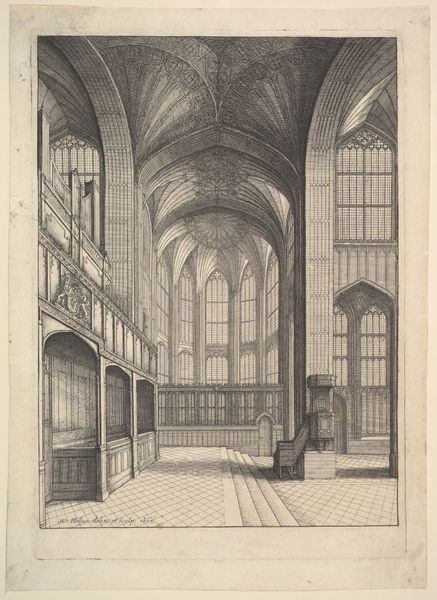
Interieur van de Heilige Stede (Nieuwezijds Kapel) te Amsterdam c. 1770 - 1783
0:00
0:00
cornelisbogerts
Rijksmuseum
engraving, architecture
#
dutch-golden-age
#
line
#
cityscape
#
engraving
#
architecture
Dimensions: height 294 mm, width 396 mm
Copyright: Rijks Museum: Open Domain
Editor: This is “Interior of the Nieuwezijds Chapel in Amsterdam” by Cornelis Bogerts, created around 1770-1783. It's an engraving, and what strikes me is the incredible detail, but it feels almost cold, a very technical drawing. What's your perspective? Curator: Looking at this engraving through a materialist lens, it's fascinating. Think about the labour involved. The engraver meticulously translates architectural space onto a copper plate, using specific tools. What impact would the availability, distribution, and affordability of the tools have had? The labor division and skill hierarchies must have also played a significant role. Editor: That’s interesting. So you’re focusing on the production of the image itself, rather than just the image of the church? Curator: Exactly! The image is important, of course. Consider what an engraving like this might represent in terms of early print culture, reproduction, and distribution. Who was the intended audience, and how did they consume images? The materiality connects directly to socio-economic questions. It's not just about artistry but the accessibility of the image and what that implies. Do you think its size affected who saw this image? Editor: Good point. Someone of lower economic status probably wouldn't have seen an engraving. It provides an even clearer idea about the access to architectural spaces back then. Curator: Precisely. This image offers a lot when you consider how its very production and consumption contribute to our understanding of 18th century Dutch society. We move beyond aesthetics and focus on its use-value. Editor: That's definitely given me a new way to look at engravings – as more than just depictions, but as products with their own history and social context. Curator: And that expanded understanding enriches how we appreciate both the art and the world it came from.
Comments
No comments
Be the first to comment and join the conversation on the ultimate creative platform.
